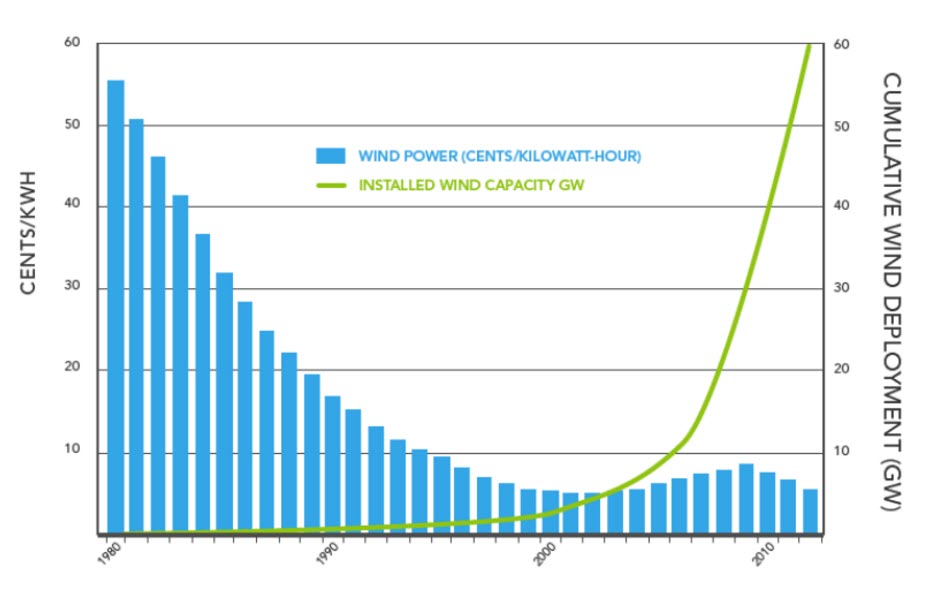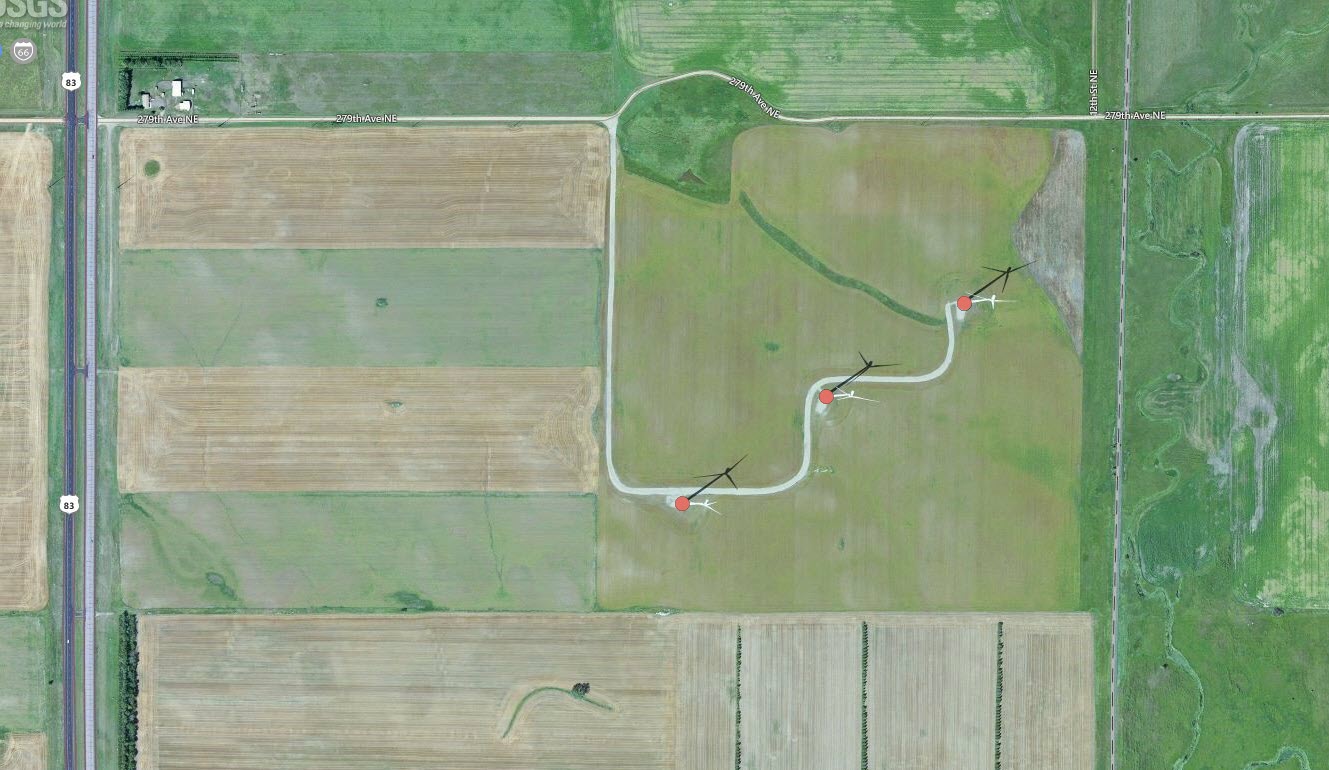If you like maps like me, and you like wind mills (wind turbines), you’ll LOVE this link to the USGS Wind Farm map. (Yes, Dust in the Wind is one of my favorite songs, and Kansas has a number of wind farm locations.)
Wind-powered electricity generation has increased to an installed cumulative capacity of 61.5 gigawatts (GW) by September, 2014 (ref. 2), accounting for 31% of the US electricity production from renewable sources. Wind energy is currently the second largest form of renewable electric generation, behind hydroelectric generation, with installed capacity growing faster than other types of renewable energy (ref. 3).
This is quite a “scholarly” article, (ref. 1) meaning I didn’t read every word. In fact, I just skipped straight to the USGS map. (You have to use your web surfing time wisely you know.)
Since living in North Dakota for a spell, I’ve been really fascinated by Wind Power. The company I worked for then, Westwood, is a significant player in the engineering and surveying related to wind farms.
 Wind farm components and installation costs have decreased in price and increased in efficiency, competing favorably with all other forms of energy production. Utility companies have paid in the range of $0.02/kWh to $0.08/kWh, depending on the region of the US the wind farm is located. And, since production isn’t dependent on fuel cost fluctuations, long term contracts can be locked in. (ref. 4)
Wind farm components and installation costs have decreased in price and increased in efficiency, competing favorably with all other forms of energy production. Utility companies have paid in the range of $0.02/kWh to $0.08/kWh, depending on the region of the US the wind farm is located. And, since production isn’t dependent on fuel cost fluctuations, long term contracts can be locked in. (ref. 4)
And, if you’re interested in more types of energy (I haven’t found a map to solar farms yet) then go to this link.
One negative aspect of a wind turbine is that birds often fly into them. That’s unfortunate, but I have a solution, which involves painting big signs on the ground that can be seen from above “WIND TURBINE AHEAD –>”. If the birds don’t see it then, it’s natural selection. (Of course I jest. Maybe we start hatching out more eagles to replenish the flock.)
I’m excited for the future of energy production and, since finding out that wind energy is less costly than nuclear energy, I have changed my thinking on building more nuclear plants. Of course, the birds would disagree with me.
References:
- Diffendorfer, J. E.et al. Onshore industrial wind turbine locations for the United States up to March 2014. Data2:150060 doi:10.1038/sdata.2015.60 (2015). www.nature.com/articles/sdata201560.
- S. Energy Information Administration. electric power monthly with data from September 2014. www.eia.gov/electricity/monthly.
- S. Energy Information Administration. Monthly energy review: November 2014. www.eia.gov/totalenergy/data/monthly/index.cfm.
- AWEA, “The Cost of Wind Energy in the U.S.” awea.org/Resources/Content.aspx?ItemNumber=5547
J. Keith Maxwell is a Professional Land Surveyor licensed in Alabama. He frequently thinks of solutions to our biggest problems, like the bird thing above.
